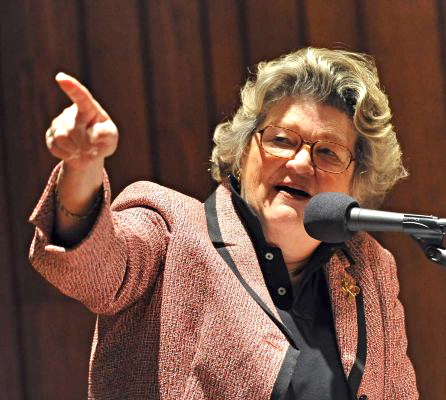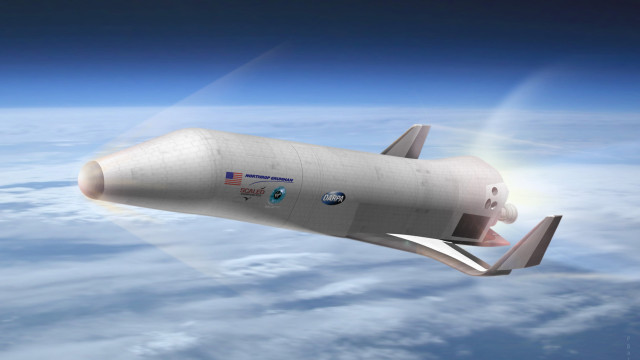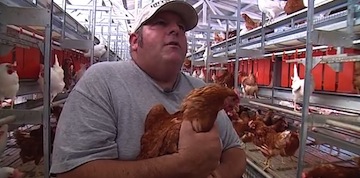Daily Business Report — Aug. 25, 2014
A private mixed-use project at San Ysidro envisions a parking garage and space for a duty-free shop.
Coalition Pushes for Mixed-Use
Project at San Ysidro Port of Entry
The San Ysidro Smart Border Coalition, a group of residents, small business owners and business leaders, delivered 5,104 petition signatures to the federal government urging it to include space for a mixed-use facility proposed by Duty Free Americas (DFA)/UETA in the final phase of the
San Ysidro port of entry modernization and expansion project.
The proposal envisions 1,000 parking spots, retail space for restaurants, and a rooftop heliport for emergency crews and Customs and Border Protection officers.
The port of entry is the busiest land border crossing in the Western Hemisphere, with an average of 50,000 northbound vehicles and 25,000 northbound pedestrians per day. The San Diego Association of Governments projects an 87 percent increase in vehicle traffice in San Ysidro by the year 2030.
Coalition leaders claim the proposal would inject $30 million to $50 million of private investment into San Ysidro and the city of San Diego, create 100 short-term construction jobs and 300 long-term jobs.
But they say the General Services Administration, the agency responsible for the port of entry project, has been unwilling to discuss allowing the private project to coincide with theirs. “UETA has operated in San Ysidro for 30 years and their flagship store would be eliminated in the current GSA plan, along with 100 current jobs in a community already experiencing high unemployment,” according to a release put forward by the coalition.
“San Ysidro and San Diego deserve better than to be virtually ignored by the Feds in Washington. With these 5,104 signatures, we are sending a clear message that we want a smarter border that promotes long-term job creation and economic development,” said Jason M-B Wells, executive director of the San Ysidro Chamber of Commerce and founder of the San Ysidro Smart Border Coalition.
Wells said the Duty Free America project is the “perfect opportunity” for a private project to fill some of the void of the federal project, such as a 1,000 space parking deficit, insufficient pick-up facilities for pedestrian crossers and lack of economic development.
The GSA port of entry project is estimated to cost $735 million and would be done in three phases, ending in January 2018, according to the agency’s website.
How San Diego is Reinventing Itself
Author, educator and community leader Dr. Mary L. Walshok will discuss
the reinvention of San Diego’s innovation and technology economies
The North San Diego Business Chamber (formerly San Diego North Chamber of Commerce) has partnered with Allen Barron Inc. to bring Dr. Mary Walshok to discuss the remaking of San Diego in innovation and technology economies. Walshok will be the keynote speaker at the chamber luncheon on Wednesday from 11:30 am to 1:30 pm at San Diego Marriott La Jolla, 240 La Jolla Village Drive, La Jolla Audience Q& A session with Walshok will follow her address.

Walshok will talk about:
• The impact of large companies leaving the region and who will be left to spend at local business.
• With technologies and industries coming and going, how do we keep investing in new products and services and what do we invest in?
• How San Diego has reinvented itself to meet the demands of today’s economy.
• How do we work together to build a more competitive economy.
Walshok is the author of more than 100 articles and reports on regional innovation, the role of research institutions in regional economies and workforce development. She has authored and co-authored numerous book chapters and articles on the world of work, including: “Blue Collar Women” (1981); “Knowledge Without Boundaries: What America’s Research Universities Can Do for the Economy, the Workplace, and the Community” (1995); “Closing America’s Job Gap “(2011); and the forthcoming book from Stanford University Press, “Invention and Reinvention: The Evolution of San Diego’s Entrepreneurial Economy” (2013).
For more information, visit www.sdbusinesschamber.com or call (858) 487-1767.

Northrop Grumman Unveils Spaceplane Concept
Northrop Grumman unveiled a concept of an unmanned spaceplane that could reach hypersonic speeds for its contract with the Defense Advanced Research Projects Agency. The aircraft is designed to meet the goals set out by DARPA, which include a reusable craft that can travel at hypersonic speeds in the upper atmosphere, all at an economical cost. Last month, the agency awarded similar development contracts to Boeing and Masten Space Systems as well.
Known as XS-1, Northrop Grumman’s spaceplane features a reusable booster that aims to reduce the costs of lifting spacecraft into lower earth orbit to under $5 million per launch.
Northrop Grumman, which has extensive operations in San Diego, is working with Scaled Composits and Virgin Galactic to develop its design. Scaled Composites, which is owned by Northrop Grumman, will lead fabrication and assembly, while Virgin Galactic will head commercial spaceplane operations and transition.
A key goal of DARPA’s program is the ability to fly 10 times in 10 days using a minimal ground crew and infrastructure, further reducing the costs of a launch.
Northrop Grumman will rely on technologies from previous aerospace projects to help develop the spaceplane concept, according to Doug Young, vice president of missile defense and advanced missions.
Many of the additional features of XS-1 are inspired by commercial airlines, like horizontal landings on standard runways to reduce the need for military support.
— Times of San Diego
JMI Equity Raises $1 Billion
San Diego-based JMI Equity, the private equity firm that specializes in software and service companies, has raised $1 billion in committed capital for its biggest ever eighth growth equity fund. Similar to the preceding funds, the eighth equity fund will focus on investing in software and service companies. The firm continues to manage 15 investments from its previous funds and currently has a total of 36 active investments. Founded in 1992, JMI has invested in 115 businesses in its target markets and has raised more than $3.1 billion of committed capital.
Carlsbad’s Hot Dog on a Stick Sold

A private equity firm has announced the acquisition of Hot Dog on a Stick, the Carlsbad-based chain of shopping mall eateries known for as much for its impaled corn dogs as its staff in brightly colored, striped uniforms and hats.
Levine Leichtman Capital Partners’ Atlanta-based subsidiary, Global Franchise Group LLC, acquired Hot Dog on a Stick, which started 68 years ago in Los Angeles and currently operates 92 outlets in the U.S. and a few other countries. Terms of the transaction were not disclosed, but the Los Angeles Times and U-T San Diego reported the deal was for $12.2 million.
Hot Dog on a Stick filed for Chapter 11 bankruptcy in February, seeking relief from expensive mall leases so it could reorganize and restructure its business.
GFG also owns the Great American Cookies, Pretzelmaker, Marble Slab Creamery and MaggiMoo’s Ice Creat & Treatery chains. Levine Leichtman, the parent company, is based in Beverly Hills.
Hot Dog on a Stick founder Dave Barham opened his first restaurant as Party Puffs in 1946 at Santa Monica Beach, selling ice cream and lemonade, according to the company’s website. Later, he used his mother’s cornbread recipe to perfect the corn dog, changed the eatery’s name to Hot Dog on a Stick and traveled with his product to county fairs — where he got the idea for the colorful uniforms.
Barham opened his first shopping mall restaurant in 1973 in Salt Lake City. He died in 1991 and left the company to his workers. Hot Dog on a Stick operates under an employee stock ownership plan.
— City News Service

San Diego Egg Farmers Work
To Improve Conditions for Hens
A fresh egg farm in Lakeside has invested in a state-of-the-art cage-free hen house. It comes after California voters approved Proposition 2 in 2008, which gives farmers until 2015 to give their egg producing hens more space.
Hilliker’s Ranch Fresh Eggs has been serving San Diego consumers since 1942. Currently, the third-generation family farm produces 15,000 eggs every day. Hilliker’s in the process of replacing their standard industry hen cages — which house up to 12 birds per cage — to a wide-open hen house that gives the birds room to roam.
“Are they happier? I think ultimately, yeah, they could be,” Frank Hilliker said.
Hilliker grew up on the family farm and says he was against the cage-free idea for 40 years. He has invested $200,000 to upgrade one hen house and has four more to go. The hens in the new house produce about 8,000 eggs a day.
“The good news is that for the age of the flock, they are where they need to be in production and even a little bit higher than what I thought they would be,” Hilliker said.
Due to Proposition 2, farmers across the state are also scrambling to meet the 2015 deadline.
Julie Walker with the San Diego County Farm Bureau says local farmers, and Hilliker, will need the public’s support to offset the cost of improved new hen houses.
“He’s willing to do it because he has faced his challenge and he’s made a triumph out of it. But he needs business, the purchases of the eggs. He needs the cooperation of the same public who voted in these changes to make his business a success,” Walker said.
Hilliker says he already has funding to upgrade a second barn, though funding for the final three depends on revenue generation.
— KPBS




